Eylem Erdogan
Free-Space Optical (FSO) Satellite Networks Performance Analysis: Transmission Power, Latency, and Outage Probability
Dec 08, 2023
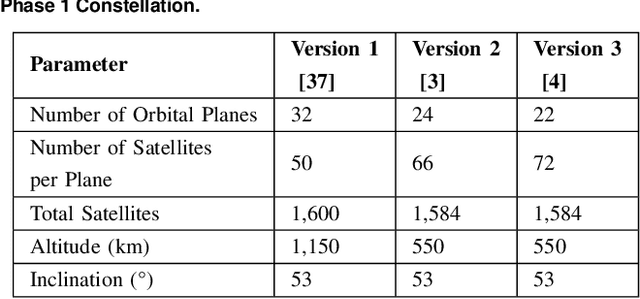

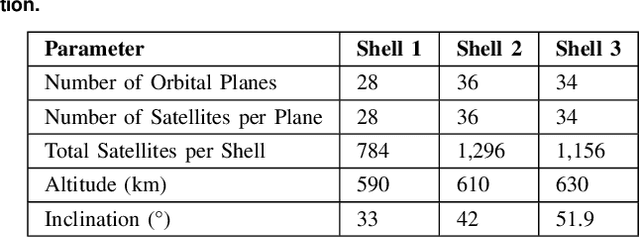
Abstract:In free-space optical satellite networks (FSOSNs), satellites can have different laser inter-satellite link (LISL) ranges for connectivity. Greater LISL ranges can reduce network latency of the path but can also result in an increase in transmission power for satellites on the path. Consequently, this tradeoff between satellite transmission power and network latency should be investigated, and in this work we examine it in FSOSNs drawing on the Starlink Phase 1 Version 3 and Kuiper Shell 2 constellations for different LISL ranges and different inter-continental connections. We use appropriate system models for calculating the average satellite transmission power and network latency. The results show that the mean network latency decreases and mean average satellite transmission power increases with an increase in LISL range. For the Toronto--Sydney inter-continental connection in an FSOSN with Starlink's Phase 1 Version 3 constellation, when the LISL range is approximately 2,900 km, the mean network latency and mean average satellite transmission power intersect are approximately 135 ms and 380 mW, respectively. For an FSOSN with the Kuiper Shell 2 constellation in this inter-continental connection, this LISL range is around 3,800 km, and the two parameters are approximately 120 ms and 700 mW, respectively. For the Toronto--Istanbul and Toronto--London inter-continental connections, the LISL ranges at the intersection are different and vary from 2,600 km to 3,400 km. Furthermore, we analyze outage probability performance of optical uplink/downlink due to atmosphere attenuation and turbulence.
On the Performance of UAV Relaying with Reconfigurable Antenna and Media Based Modulation in the Presence of Shadowed Fading
Jun 09, 2022



Abstract:Unmanned aerial vehicles (UAVs) have attracted significant interest from the academia and industry most recently. Motivated by the wide usage of UAVs, this paper considers UAV communication with reconfigurable antenna (RA) in the presence of fading and shadowing effects which occur due to tall buildings and skyscrapers in urban areas. More precisely, RA offers to receive information through mirror activation patterns (MAPs) so that it can achieve a receive diversity with decreased error probability by using only one radio frequency (RF) chain. Also, media based modulation (MBM) technique for data transmission with MAPs can be exploited by using RAs with reduced cost. To quantify the performance of the proposed UAV system, we derive a tight upper bound for the overall error probability by considering approximated channel model to the standardization studies for UAVs. The results have shown that RAs can make the overall system more resilient to shadowing and fading effects in terms of error performance, and they are energy efficient.
Link Budget Analysis for Free-Space Optical Satellite Networks
Apr 27, 2022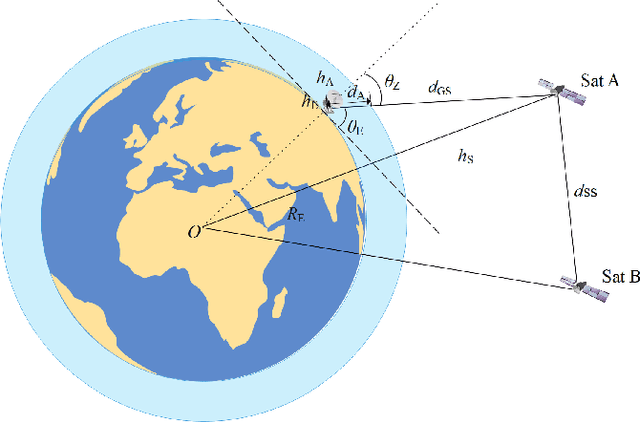
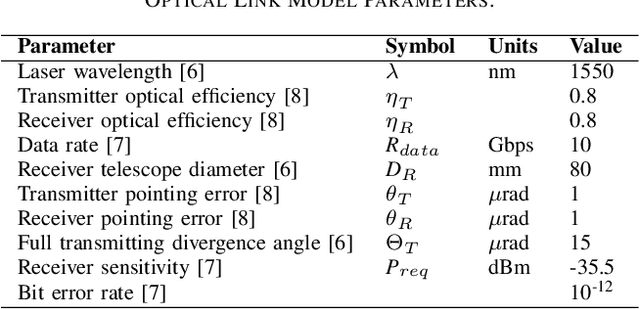


Abstract:Free-space optical satellite networks (FSOSNs) will employ free-space optical links between satellites and between satellites and ground stations, and the link budget for optical inter-satellite links and optical uplink/downlink is analyzed in this paper. The satellites in these FSOSNs will have limited energy and thereby limited power, and we investigate the effect of link distance and link margin on optical inter-satellite link transmission power, and the effect of slant distance, elevation angle, and link margin on optical uplink/downlink transmission power. We model these optical links and compute the results for various parameters. We observe that the transmission power increases when the link distance increases for inter-satellite and uplink/downlink communications, while the transmission power decreases when the elevation angle increases for uplink/downlink transmission. We also observe an inverse relationship between link margin and link distance. Furthermore, we highlight some practical insights and design guidelines gained from this analysis.
Cooperation in Space: HAPS-Aided Optical Inter-Satellite Connectivity with Opportunistic Scheduling
Dec 28, 2021



Abstract:Issues with tracking, precision pointing, and Doppler shift are the major sources of performance loss in laser inter-satellite communication that can severely decrease the coverage and overall performance of satellite constellations. As a solution to these problems, we propose a cooperation strategy in which a high altitude platform station (HAPS) staying at a quasi-stationary position contributes to the inter-satellite connectivity. In this setup, the HAPS node uses two different scheduling approaches: one that relies on the zenith angle; the other on instantaneous signal-to-noise ratio. To quantify the performance of the proposed scheme, overall outage probabilities for the two scheduling methods are obtained. In addition, guidelines for the design of practical inter-satellite networks are provided.
Optical Satellite Eavesdropping
Dec 09, 2021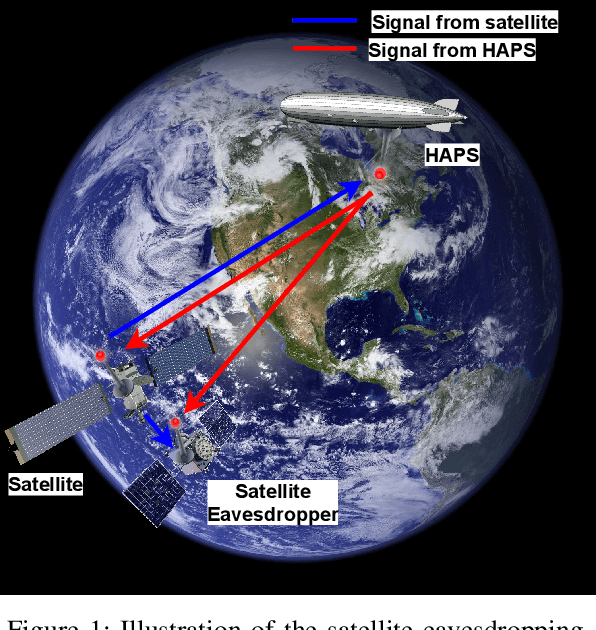
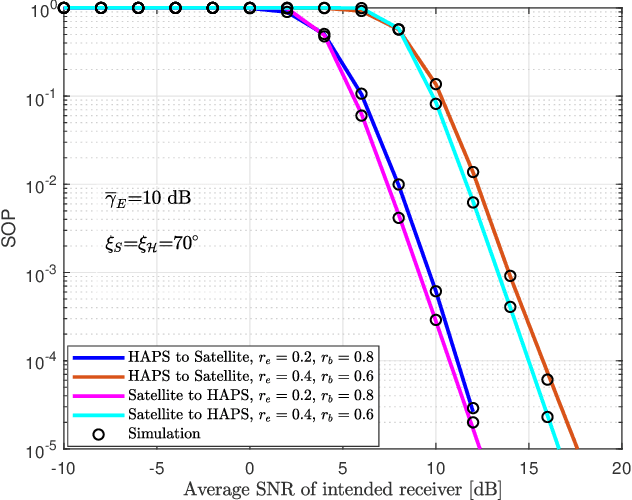
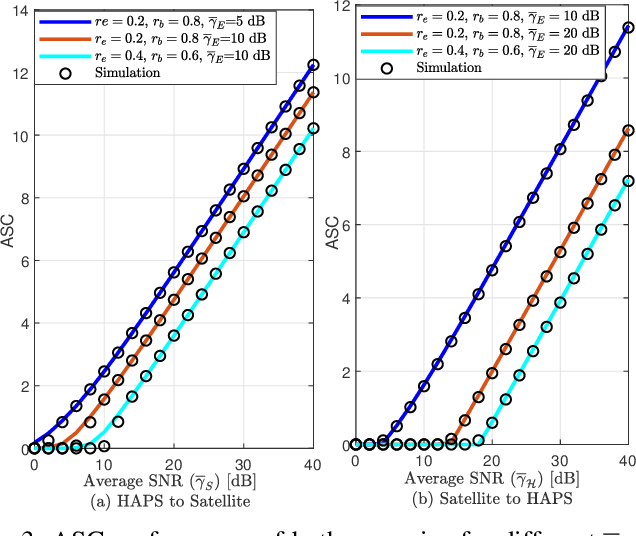
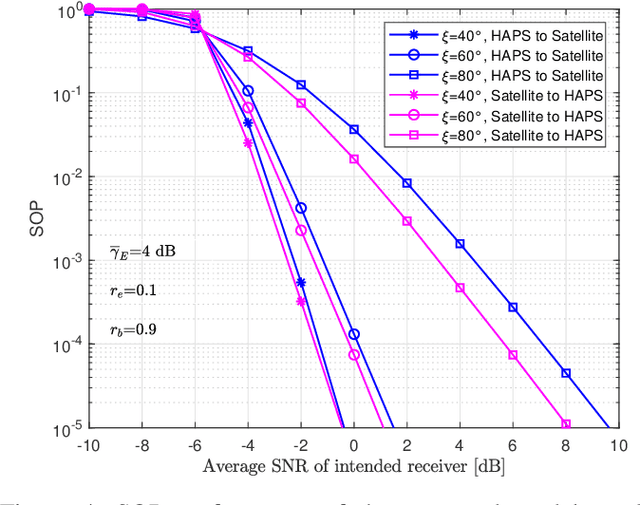
Abstract:In recent years, satellite communication (SatCom) systems have been widely used for navigation, broadcasting application, disaster recovery, weather sensing, and even spying on the Earth. As the number of satellites is highly increasing and with the radical revolution in wireless technology, eavesdropping on SatCom will be possible in next-generation networks. In this context, we introduce the satellite eavesdropping approach, where an eavesdropping satellite can intercept optical communications established between a low Earth orbit (LEO) satellite and a high altitude platform station (HAPS). Specifically, we propose two practical eavesdropping scenarios for satellite-to-HAPS (downlink) and HAPS-to-satellite (uplink) optical communications, where the eavesdropper satellite can eavesdrop on the transmitted signal or the received signal. To quantify the secrecy performance of the scenarios, the average secrecy capacity (ASC) and secrecy outage probability (SOP) expressions are derived and validated with Monte Carlo (MC) simulations. We observe that turbulence-induced fading significantly impacts the secrecy performance of free-space optical (FSO) communication.
On the Performance of HAPS-assisted Hybrid RF-FSO Multicast Communication Systems
Sep 21, 2021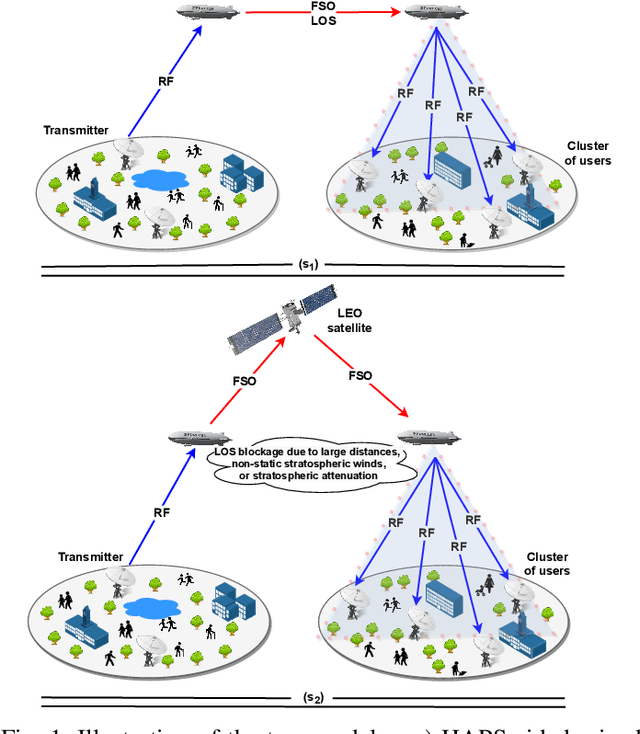
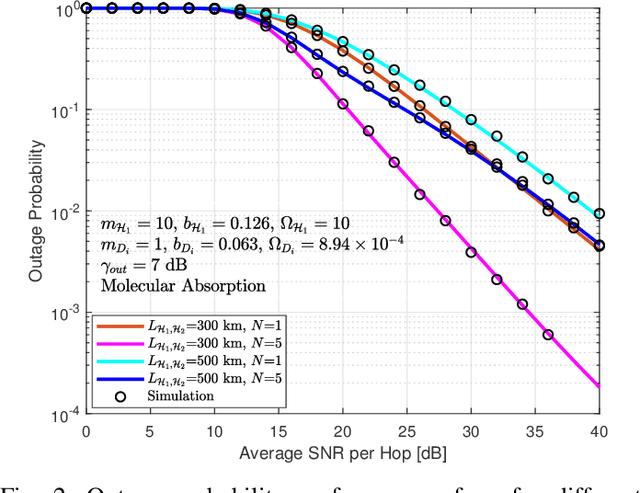
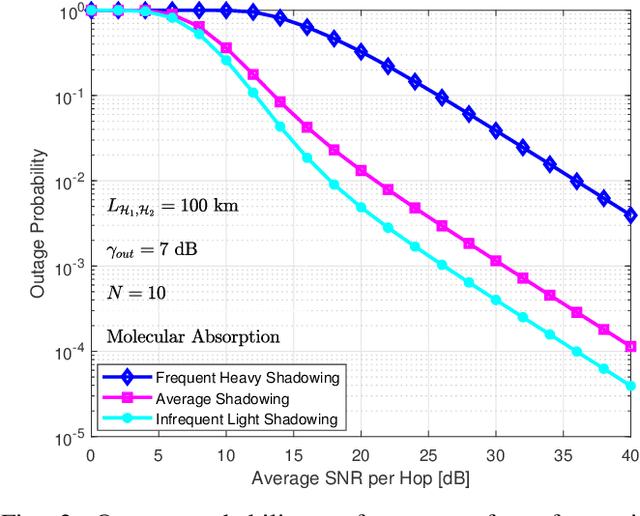
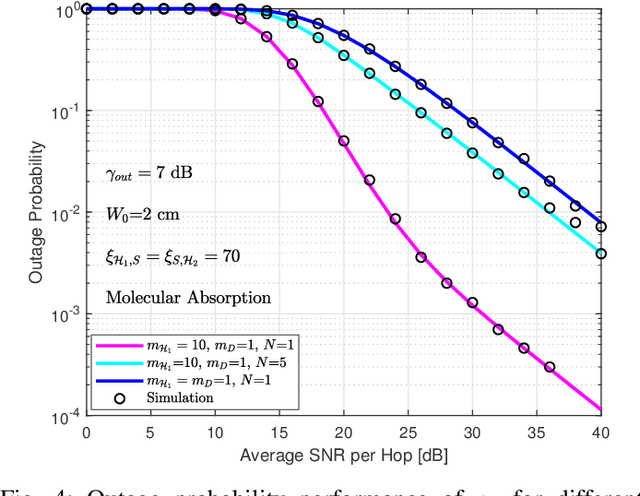
Abstract:Multicast routing is considered a promising approach for real-time applications to address the massive data traffic demands. In this work, we study the outage probability of a multicast downlink communication network for non-terrestrial communication systems. More precisely, we propose two practical use-cases. In the former model, we propose a high altitude platform station (HAPS) aided mixed radio frequency (RF)/ free-space optical (FSO)/RF communication scheme where a terrestrial ground station intends to communicate with a cluster of nodes through two stratospheric HAPS systems. In the latter model, we assume that the line of sight (LOS) connectivity is inaccessible between the two HAPS systems due to high attenuation caused by large propagation distances. Thereby, we propose a low Earth orbit (LEO) satellite-aided mixed RF/FSO/FSO/RF communication. For the proposed scenarios, outage probability expressions are derived and validated with Monte Carlo (MC) simulations under different conditions.
HAPS Selection for Hybrid RF/FSO Satellite Networks
Jul 27, 2021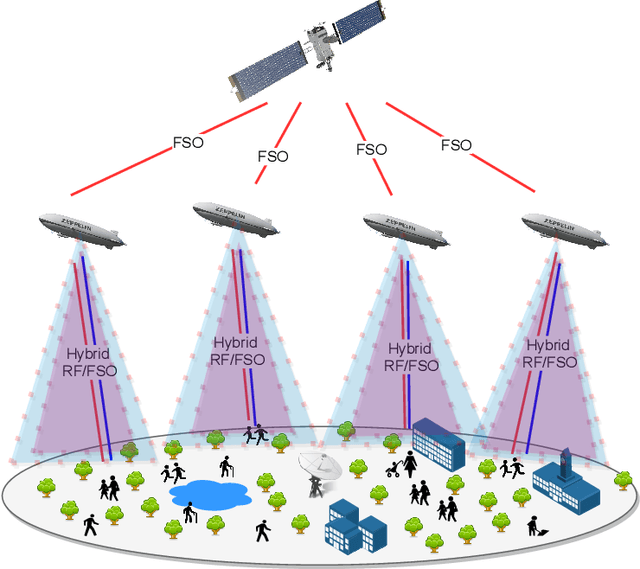
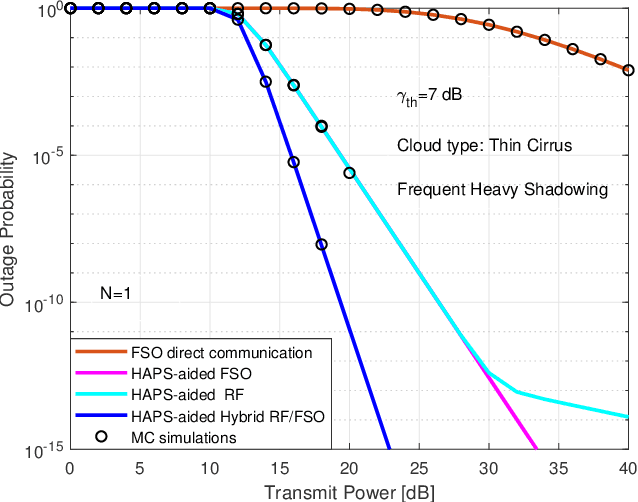
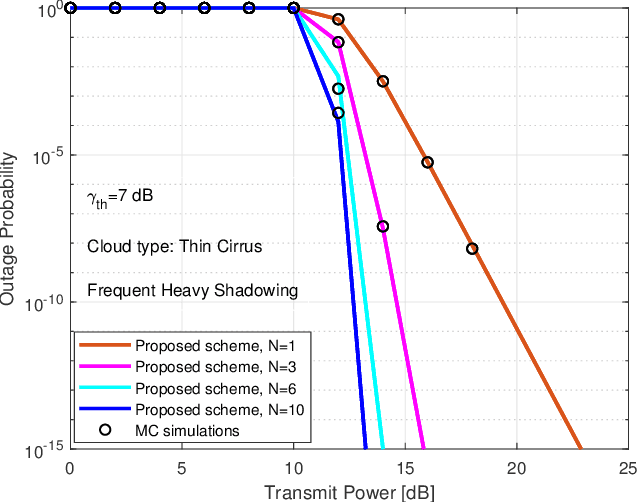
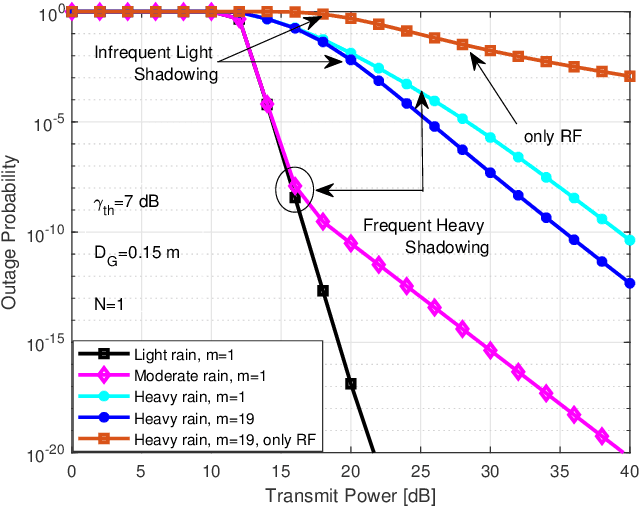
Abstract:Non-terrestrial networks have been attracting much interest from the industry and academia. Satellites and high altitude platform station (HAPS) systems are expected to be the key enablers of next-generation wireless networks. In this paper, we introduce a novel downlink satellite communication (SatCom) model where free-space optical (FSO) communication is used between a satellite and HAPS node, and a hybrid FSO/radio-frequency (RF) transmission model is used between the HAPS node and ground station (GS). In the first phase of transmission, the satellite selects the HAPS node that provides the highest signal-to-noise ratio (SNR). In the second phase, the selected HAPS decodes and forwards the signal to the GS. To evaluate the performance of the proposed system, outage probability expressions are derived for exponentiated Weibull (EW) and shadowed-Rician fading models while considering the atmospheric turbulence, stratospheric attenuation, and attenuation due to scattering, path loss, and pointing errors. Furthermore, the impact of aperture averaging, temperature, and wind speed are investigated. Finally, we provide some important guidelines that can be helpful for the design of practical HAPS-aided SatCom.
A Weather-Dependent Hybrid RF/FSO Satellite Communication for Improved Power Efficiency
Jul 09, 2021



Abstract:Recent studies have shown that satellite communication (SatCom) will have a fundamental role in the next generation non-terrestrial networks (NTN). In SatCom, radio-frequency (RF) or free-space optical (FSO) communications can be used depending on the communication environment. Motivated by the complementary nature of RF and FSO communication, we propose a hybrid RF/FSO transmission strategy for SatCom, where the satellite selects RF or FSO link depending on the weather conditions obtained from the context-aware sensor. To quantify the performance of the proposed network, we derive the outage probability by considering different weather conditions. Furthermore, we investigate the impact of non-zero boresight pointing errors and illustrate the benefits of the aperture averaging to mitigate the effect of misalignment. Finally, we suggest effective design guidelines that can be useful for system designers. The results have shown that the proposed strategy performs better than the dual-mode conventional hybrid RF/FSO communication in terms of outage probability, offering almost 5 dB gain.
Physical Layer Security Framework for Optical Non-Terrestrial Networks
Jun 15, 2021



Abstract:In this work, we propose a new physical layer security framework for optical space networks. More precisely, we consider two practical eavesdropping scenarios: free-space optical (FSO) eavesdropping in the space and FSO eavesdropping in the air. In the former, we assume that a high altitude platform station (HAPS) is trying to capture the confidential information from the low earth orbit (LEO) satellite, whereas in the latter, an unmanned aerial vehicle (UAV) eavesdropper is trying to intercept the confidential information from the HAPS node. To quantify the overall performance of both scenarios, we obtain closed-form secrecy outage probability (SOP) and probability of positive secrecy capacity (PPSC) expressions and validate with Monte Carlo simulations. Furthermore, we provide important design guidelines that can be helpful in the design of secure non-terrestrial networks.
On the Use of HAPS to Increase Secrecy Performance in Satellite Networks
Jun 15, 2021



Abstract:In this paper, we investigate the secrecy performance of radio frequency (RF) eavesdropping for a high altitude platform station (HAPS) aided satellite communication (SatCom) system. More precisely, we propose a new SatCom scheme where a HAPS node is used as an intermediate relay to transmit the satellite's signal to the ground station (GS). In this network, free-space optical (FSO) communication is adopted between HAPS and satellite, whereas RF communication is used between HAPS and GS as the line-of-sight (LoS) communication cannot be established. To quantify the overall secrecy performance of the proposed scheme, closed-form secrecy outage probability (SOP) and the probability of positive secrecy capacity (PPSC) expressions are derived. Moreover, we investigate the effect of pointing error and shadowing severity parameters. Finally, design guidelines that can be useful in the design of practical SatCom networks are presented.
 Add to Chrome
Add to Chrome Add to Firefox
Add to Firefox Add to Edge
Add to Edge